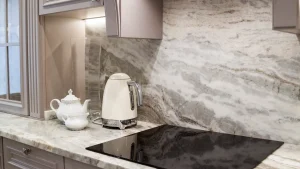Aluminum is a highly versatile material that is widely used in fabrication work. This material has unique properties that make it an ideal choice for a range of applications, from aerospace to automotive industries. Aluminum is lightweight, durable, and corrosion-resistant, making it an attractive option for designers and engineers alike.
One of the key advantages of aluminum fabrication work is its malleability. This material can be easily shaped and formed into a wide range of shapes and sizes, making it suitable for everything from aircraft parts to architectural elements. With the right tools and techniques, skilled fabricators can create complex structures and shapes from aluminum, resulting in products that are both functional and aesthetically pleasing.
Another benefit of aluminum fabrication work is its low cost. This material is readily available and affordable, making it an attractive option for manufacturers and designers looking to keep costs down. Despite its low cost, aluminum is still a high-quality material that is suitable for use in a wide range of applications.
Innovations in Aluminum Fabrication Technology
In recent years, there have been significant advances in aluminum fabrication technology. These innovations have made it possible to create even more complex and intricate structures from this versatile material. One such innovation is the use of 3D printing technology in aluminum fabrication.
3D printing technology allows designers and engineers to create intricate, high-precision parts and components from aluminum. This technology makes it possible to create complex shapes and geometries that would be difficult or impossible to achieve using traditional fabrication techniques. With 3D printing, it is also possible to create parts and components that are customized to meet the specific needs of a particular application.
Another innovation in aluminum fabrication is the use of laser cutting technology. Laser cutting allows fabricators to cut aluminum with a high degree of precision and accuracy, resulting in clean, smooth cuts that require minimal finishing. This technology is particularly useful in the creation of complex, intricate shapes that would be difficult to achieve using traditional cutting methods.
Sustainability in Aluminum Fabrication for your place
Sustainability is becoming an increasingly important consideration in aluminum fabrication. As concerns over the environmental impact of manufacturing processes grow, fabricators are looking for ways to reduce their carbon footprint and minimize waste. One way that aluminum fabrication can be made more sustainable is through the use of recycled aluminum.
Recycled aluminum is an environmentally friendly alternative to newly mined aluminum. It requires significantly less energy to produce and generates fewer greenhouse gas emissions. By using recycled aluminum in fabrication work, manufacturers can reduce their environmental impact and contribute to a more sustainable future.
Another way to make aluminum fabrication more sustainable is through the use of renewable energy sources. Many fabricators are now using solar, wind, or hydroelectric power to meet their energy needs. This not only reduces their carbon footprint but also helps to reduce their energy costs over the long term. All of these factors make aluminum fabrication an exciting and dynamic field that is sure to continue to evolve in the coming years.




